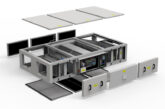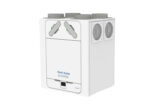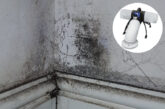
Leading British ventilation manufacturer Vent-Axia is committed to providing healthy indoor air while driving a low-carbon future.
The company is therefore paving the way in the ventilation sector when it comes to its decarbonisation. To illustrate its commitment Vent-Axia has set clear sustainability targets including increasing its sales of its low carbon products and increasing the use of recycled material in its manufacturing. Currently the carbon avoided by Vent-Axia’s group products is around four times its operational carbon footprint. Vent-Axia aims to be net zero by 2040, ten years before the Government’s 2050 net-zero target.
As part of its sustainability strategy Vent-Axia has developed three pillars that orientate and deliver its long-term objectives which are: Product – Engineer Sustainable Solutions; Planet – Improve environmental performance; and People – Connect people together. These focus areas have driven a number of targets including Vent-Axia setting a target of 70% of its sales revenue to be from low carbon products by end of FY2025. The company has successfully reached this milestone ahead of the target date. Vent-Axia has also set a target for 90% of the plastic it uses in its own manufacturing to be from recycled sources by the end of FY2025. Currently this figure is already at 83% and is on track to hit the 90% figure.
Vent-Axia recognises the importance of cutting carbon emissions in the built environment since buildings account for 40% of energy use in Europe and approximately 35% of emissions. To meet the Government’s 2050 net-zero target, buildings need to decarbonise which will involve the wide-scale electrification of heating, a move away from fossil fuels, as well as significant improvements to air tightness and building insulation. Heat recovery ventilation will be a key technology to help deliver the final piece of the carbon avoidance by preventing heat loss, so as a technology it is set for significant growth.
“At Vent-Axia we have been leading the ventilation industry since 1936 and continue to do with our aim to become net zero by 2040. At Vent-Axia we are committed to a low-carbon future with the health and wellbeing of people and the planet at its core”, said Joseph Brawn, Product and Marketing Director at Vent-Axia. “Carbon avoidance is the only way for the UK to reach net zero with the decarbonisation of buildings an essential part of this. We aim to provide our customers with the products to help them on their decarbonisation journey while also continuing our commitment to providing effective ventilation to improve indoor air quality and comfort for inhabitants – since 70% of the air we breathe in our lifetime is air inside buildings.”
To meet the necessary carbon reductions buildings are becoming more thermally efficient as they are insulated, and their air tightness is increased to avoid heat loss. However, without considering ventilation alongside these measures a building can end up with condensation, mould and poor IAQ. Energy efficient heat recovery ventilation therefore supplies a solution that provides healthy filtered air while recovering heat that would be otherwise lost.
Vent-Axia is a solutions provider and collaborates closely with its customer base to ensure it develops the products customers need to decarbonise. For that reason, the company is constantly improving the efficiency of its products and reducing their carbon intensity. For the company’s latest heat recovery ventilation products the Sentinel Apex commercial heat recovery system and the Lo-Carbon Sentinel Econiq residential Mechanical Ventilation with Heat Recovery (MVHR) it can provide TM65 data to help customers understand their wider life cycle assessment.
The Sentinel Apex and the Lo-Carbon Sentinel Econiq have specifically been designed to meet the challenges of decarbonisation. Both systems feature market-leading heat recovery efficiencies of up to 93%. This level of efficiency means that the heating and cooling energy lost through ventilation can be reduced by up to 25% when compared to a 73% efficient heat exchanger in both heating and cooling seasons. Both heat recovery systems also contain energy efficient EC/DC motors with market-leading extremely low Specific Fan Power, these types of motors typically mean a third less energy is lost to heat compared to a conventional AC motor, with motor efficiencies better than IE5.
With overheating an issue in thermally efficient buildings the Apex and Econiq have been designed with an automatic summer bypass which is sized to eliminate performance loss. Ventilation on demand is also available as standard so no wasted energy and indoor IAQ is improved. The systems also both contain high levels of filtration to ensure the air supplied is fresh and healthy for improved and better indoor air quality.
For further information on Vent-Axia’s sustainability strategy visit: https://www.vent-axia.com/sustainable. For further information on all products and services offered by Vent-Axia telephone +44 (0)344 856 0590 or visit www.vent-axia.com.








